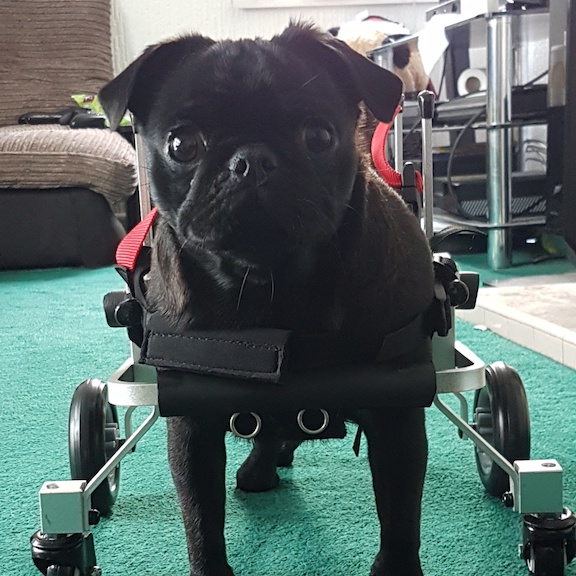Your dog should be mobile. When dogs cannot move because of injury and disease, it can seriously affect their physical, mental, and emotional health. Mobility aids such as dog wheelchairs are the long-term solution for permanently disabled dogs. Still, physical therapy can help them develop the proper coping mechanisms for their disability. Canine rehab, together with good quality mobility aids, can give your injured or disabled dog a new leash in life.
Manual manipulation
Canine rehab specialists trained in the proper techniques may perform manual therapies for your pet. These include moving the joints, stretches, massage, and exercises.
Therapy aids
They may also require the dog to use “unbalancing” tools such as wobble boards and rockers, therapy bands, and physioballs to improve their balance, strength, flexibility, and coordination. Compelling the dog to walk on irregular surfaces trains it to have better spatial awareness so it knows where its feet are at all times. This gives it better control over its body when the position changes.
Aquatic therapy
As mentioned earlier, dogs that are unable or not recommended to undergo routine weight-bearing exercises can still do exercises in water. These include swimming and the use of an underwater treadmill. The water takes on most of the dog’s weight, preventing further injury. Aquatic therapy also helps improve cardiovascular function, range of motion, and strength to improve mobility out of water.
Other therapies and physical rehab for disabled dogs
Your canine rehab professional may also employ several techniques to alleviate certain conditions. Cryotherapy uses ice packs to reduce inflammation and mitigate pain by contracting the blood vessels to reduce deep tissue and surface bleeding. By contrast, heat therapy using warm towels can also help relieve pain and inflammation by dilating the blood vessels to speed up healing.
Pet wheelchairs help with exercise, but special machines may also be used in turn, such as:
Extracorporeal Shockwave Therapy, or ESWT – accelerates healing by transmitting high-energy waves through the dog’s body, generating heat that increases blood flow. ESWT can also reduce muscle spasms, swelling, and inflammation. It is especially effective in treating ligament and tendon damage, fractures, osteoarthritis, and hip dysplasia.
Low-level laser therapy – accelerates wound healing and reduces post-trauma pain and swelling by stimulating the natural production of pain-alleviating chemicals in the dog’s body, such as endorphins.
Neuromuscular Electrical Stimulation, or NMES – treats vascular and musculoskeletal issues by causing the muscles to contract and release using low-volt electrical stimulation
